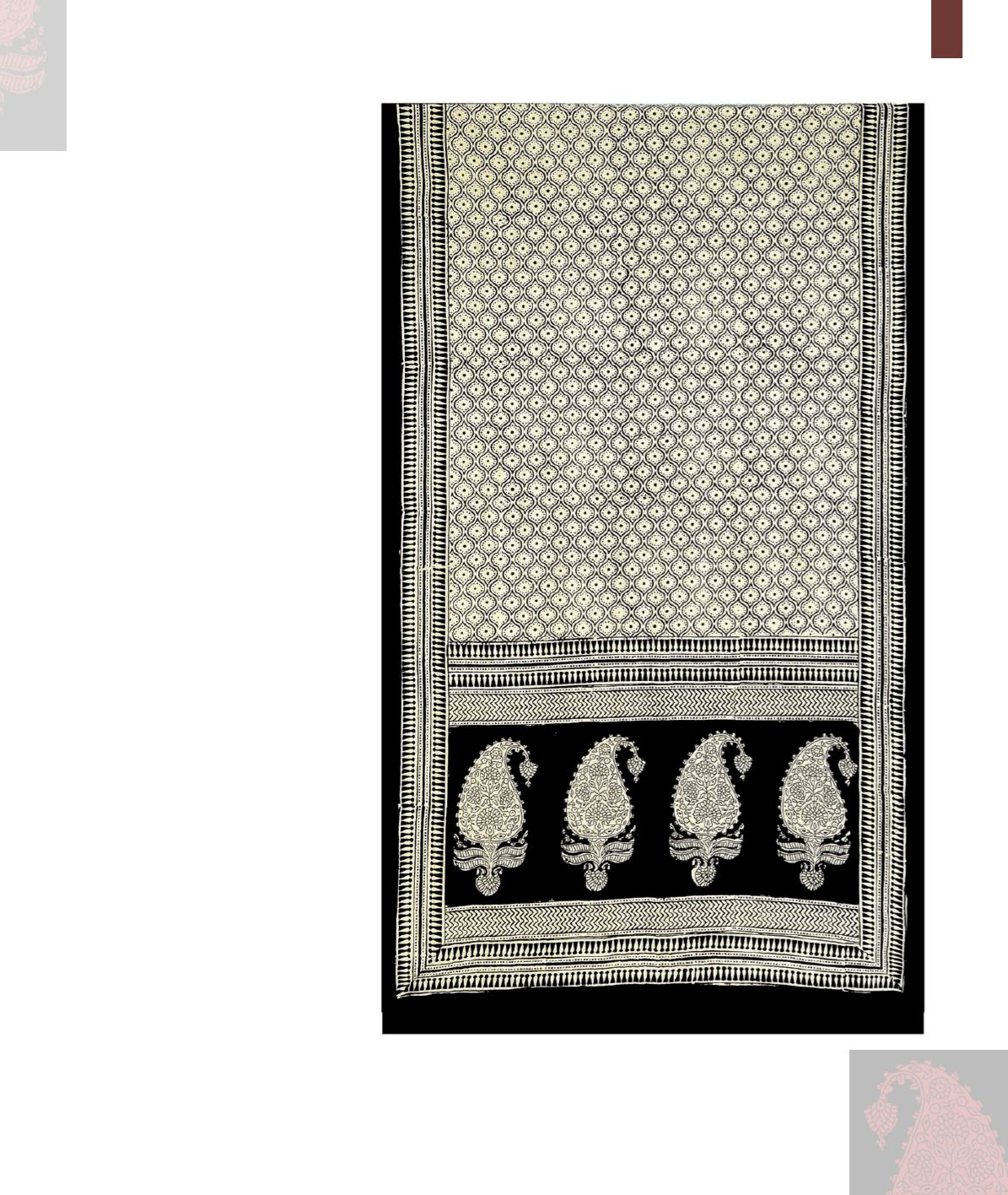
35
The Process
Wooden blocks are carved with motifs
and patterns in relief, and then these
blocks are pressed in a dye to create
motifs within a composition such as a
textile with borders, an end panel and
field. In Bagh, block-printed motifs are
created with red and black coloured dyes.
Most motifs require one block, while
some require two blocks with each block
creating a different part of the motif such
as the outline and the filler.
The block-printing process commences
with the selection of appropriate cloth.
As the process involves boiling the cloth,
it is necessary to work with fabric made
of natural fibres such as cotton, silk and
wool and not synthetic fibres. For stitched
garments, the fabric is cut according to
the garment or home linen to be created
out of it.
The next step involves washing the cloth
and then dipping it in a solution of goat
dung, castor oil and raw salt. This is
important as it removes starch from it
that makes the block-printed motif more
defined and of a deeper colour, and it
also makes the cloth softer. The cloth is
soaked in this solution, then removed and
folded in a very tight bundle and kept on
the ground to allow the cloth to absorb
the solution thoroughly, an action that is
assisted by the heat generated from the
ground below and the solution.
The next day, the cloth bundle is opened
and rinsed at
hodi
, a special place of
the river. It is then beaten on rocks to
remove the starch. It is dipped in the
solution again, and beaten; the process
is repeated three times. This ensures the
starch is removed and the cloth is soft.
The cloth is rinsed and then kept in a tub
filled with a solution of
harad
powder
(Terminalia chebula)
. After squeezing the
cloth, it is dried in the sunlight to obtain
a pale yellow colour. If it is not dried or
treated with
harad
, the colour will not be
obtained.


